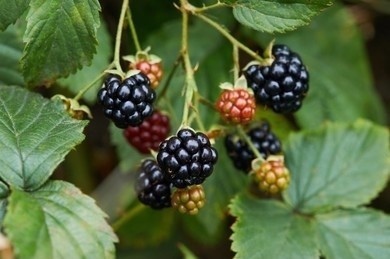Rubus Plants Tissue Culture

Rubus plants are a large genus in the family Rosaceae, with about 700 known species distributed worldwide, mainly in the temperate zones of the Northern Hemisphere, with a few distributions to the tropics and Southern Hemisphere. Most of the plants in this genus have pulpy, sweet, and sour fruits, which are edible and can be cultivated for a long time as important fruits. The fruits, seeds, roots, and leaves of some species are used as human medicine, the stem bark and root bark are used for extracting tannins, and a few species are cultivated in gardens for ornamental purposes.
Rubus plants can be propagated by apex pressing, root stump propagation, root-burying propagation, and division propagation, etc. to produce seedlings. However, if a large number of seedlings are needed for the promotion of a good variety, a large number of high-quality seedlings can be obtained for cultivation and research in a relatively short period by using the tissue culture technology service provided by Lifeasible for expansion.
Tissue culture service
Lifeasible has established an efficient and rapid propagation system for Rubus plants, which is not only beneficial to the development of new varieties but also an important means to expand the propagation of indigenous good varieties and to obtain a large number of high-quality tissue culture seedlings in a short period to meet the needs of growers and scientific research.
- Rubus fruticosus L.
- Rubus corchorifolius
- Rubus occidentalis
- Rubus crataegifolius Bunge
- Rubus peltatus Maxim.
- Rubus suavissimus
- Rubus delavayi Franch.
- Rubus calycinoides
- Rubus howii
- Rubus alexeterius Focke
The materials commonly used in plant tissue culture are plant tissues and organs, and the explant materials usually selected by Lifeasible in the tissue culture experiments of Rubus plants are annual shoots with buds (single shoot stem segments), old stem tips, or unsprouted axillary buds as materials.
Contamination and browning of explants are problems that must be solved when Rubus plants are subjected to primary culture, and our selection of suitable explants can not only reduce the rate of contamination and browning but the selection of suitable explants can not only reduce the contamination and browning rate but also improve the survival rate and provide more material for subsequent succession.
You want to sign a confidentiality agreement.
You have a specific plant species for your experimental needs.
You have a reliable and relevant cooperation project to discuss.
You are very interested in our project or have any questions.
You need an updated and detailed quotation.
For research or industrial use.



